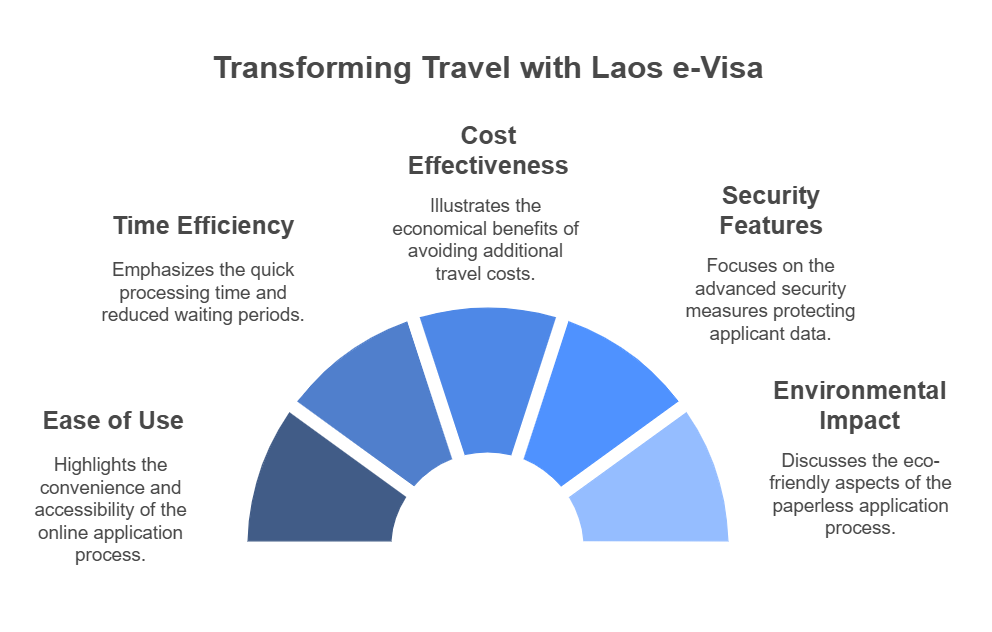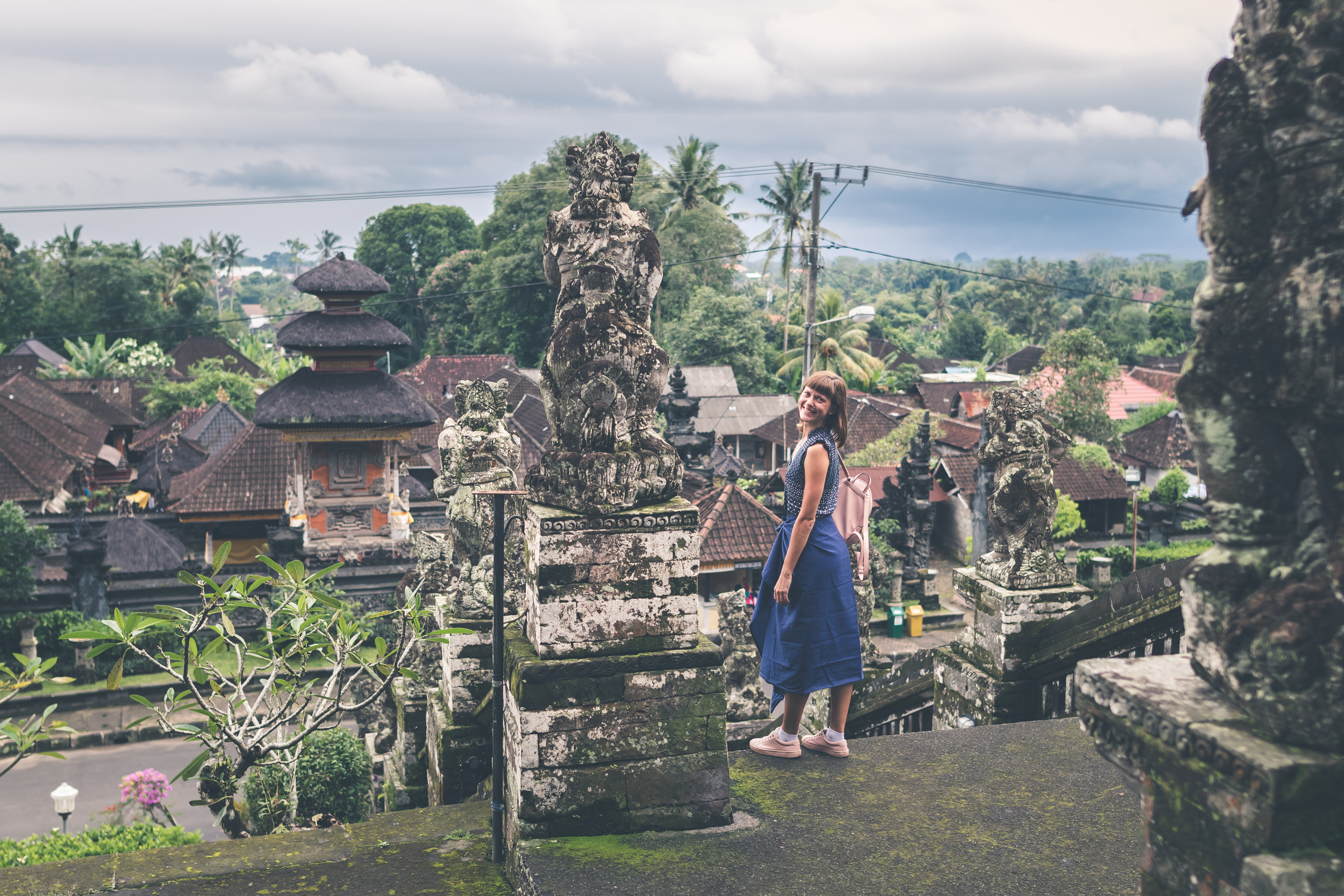
From being most inconvenient to most convenient, the Laos eVisa has really opened wide its doors to international visitors who want to see most of this Southeast Asian beauty. With its picturesque landscapes, rich culture, and historic landmarks, Laos attracts thousands of travelers every year. The introduction of the e-Visa makes entry easier and offers numerous advantages for eligible applicants. Herein is a comprehensive look at the benefits of applying for a Laos e-Visa.
An Overview of Laos eVisa
The Laos eVisa is an electronic travel authorization system introduced to streamline the visa application process for foreign visitors. Designed to enhance convenience and accessibility, the eVisa enables eligible travelers to apply for their Laos visa online without the need to visit embassies or consulates. Here’s what you need to know:
- Eligibility: Citizens of over 150 countries can apply.
- Purpose: Mainly for tourism or visiting family.
- Process: Apply online by filling out a form, uploading documents, and paying the fee.
- Requirements: A valid passport (at least six months), a recent photo, and sometimes proof of accommodation.
- Validity: The eVisa is valid for 60 days from the issue date, allowing a 30-day single entry.
- Processing Time: Approval usually takes 3-5 business days.
- Entry Points: Accepted at major airports and land crossings like Wattay International Airport and Thai-Lao Friendship Bridges.
Why You Should Consider the Laos eVisa
The Laos eVisa offers a modern, streamlined approach to obtaining travel authorization. Designed to simplify the process for international visitors, it eliminates the need for long queues and extensive paperwork. Here are the main advantages of applying for Laos eVisa
1. Ease of Use and Accessibility
Perhaps the most important advantage of the Laos e-Visa has to do with the convenience it promises. No more does the applicant have to make that trek to an embassy or consulate to apply for a visa. This can now be done online, never having to set foot in such places.
- 24/7 Accessibility: Applications can be made at any time, so the traveler can plan a trip at any time.
- Smooth Application Process: The platform is designed to be easy, with instructions guiding the applicant through every step.
2. Time-Efficient Process
The online application reduces the time spent acquiring a visa. In a typical visa application process, one is often forced to wait in queues or book an appointment, which may take weeks. With the Laos e-Visa, travelers can:
- Fill out the application in mere minutes.
- Get their e-Visa in 3–5 business days, depending on the processing time chosen.
3. Economical
Application for a Laos e-Visa is less expensive than other means of getting a visa. Skipping the need to go to an embassy or a consulate saves money spent on going to and from these places. Additionally, payment for the e-Visa is clearly stated without any hidden fees.
4. Easy Entry
The holder of an e-Visa for Laos has an easy entry process when arriving. At the international checkpoints, there are special e-Visa counters where travelers can avoid the long immigration queues, which is quite useful in peak travel times.
5. Secure Application System
Advanced security for an applicant's data is considered in the working process of the Laos e-Visa system. Making the application online prevents travelers from risks of losing important documents on their way to an embassy or consulate. The digital process itself will ensure that the information is encrypted and held safely.
6. Validity and Flexibility
The usually provided Lao e-Visa normally allows single entry, and the visitor can spend 30 days in the country. All these flexibilities make this visa quite ideal for any kind of journey, whether it be a tourism purpose, a business trip, or a simple tour to visit families and relatives.
7. Sustainable Tourism
The Laos e-Visa simplifies the visa process, hence allowing more tourists to visit the country. More tourists translate to more money being injected into the local economy, the growth of small businesses, and sustainable tourism initiatives that ensure Laos' cultural and natural heritage is preserved.
8. Environmentally Friendly
The e-Visa does away with the use of paper forms and physical submissions, hence a more eco-friendly alternative to traditional visa applications. This is in line with the international community's efforts towards going green and embracing digital solutions.
Security Features of the Laos eVisa System
The Laos eVisa system is designed to incorporate advanced security features that will guarantee protection for applicants' personal information and ensure a reliable means of application. The following are the key features:
- Data Verification: Details submitted are checked for accuracy and to prevent fraud.
- Secure Payment: Payments are made via trusted gateways, which follow global standards on security.
- Unique IDs: Each application is assigned a unique ID for secure tracking and prevention of misuse.
- Restricted Access: Only authorized personnel have access to applicant data, ensuring confidentiality.
- Regular Updates: The system is regularly updated for heightened security and the removal of various types of vulnerabilities.
Advantages of Laos e-Visa Over Visa on Arrival
The Laos e-Visa and Visa on Arrival are both viable options for travelers, but the e-Visa offers distinct advantages that make it the preferred choice for many. Below is a detailed comparison highlighting the benefits of choosing the e-Visa over the Visa on Arrival:
|
Feature |
Laos e-Visa |
Visa on Arrival |
|
Application Process |
Complete online before travel. |
Apply at the immigration counter upon arrival. |
|
Convenience |
Submit an application from anywhere at any time. |
Requires queuing at immigration counters. |
|
Processing Time |
3–7 business days, pre-approved before travel. |
Done on-site, often with long waits during peak times. |
|
Risk of Rejection |
Approval granted before departure. |
Risk of rejection upon arrival. |
|
Cost Transparency |
Fees clearly outlined during the application process. |
Additional service charges may apply. |
|
Payment Methods |
Online payment via credit/debit card. |
Payment in cash, often in USD or local currency. |
|
Document Submission |
Digital submission of documents (passport, photo). |
Physical documents required at the entry point. |
|
Eco-Friendliness |
Fully digital, paperless process. |
Involves physical forms and documentation. |
|
Queue and Waiting Time |
Dedicated e-Visa counters for quicker entry. |
Long queues at immigration during busy seasons. |
|
Access Points |
Valid at major airports and designated land crossings. |
Limited to specific entry points. |
|
Security |
Secure online platform with encrypted data processing. |
Manual verification at immigration counters. |
|
Flexibility |
Pre-approved, allowing for confident trip planning. |
Last-minute option but with potential delays. |
Which One to Choose?
- Laos eVisa: This is suitable for the traveler who likes to plan in advance and avoid any delay, it is best for the peak season travelers.
- Visa on Arrival: Applicable for the last-minute travel plan, it does have a risk of taking more time in processing and has a chance of rejection as well.
Impact of Laos eVisa on Tourism and Economy

Laos eVisa has dramatically impacted tourism and overall economy by bringing along various benefits and opportunities.
- Increase in Tourist Arrivals
The Laos eVisa makes application easier, hence allowing more tourists to see the country. With the government reducing time and energy spent acquiring a visa, it has become an easy destination; hence, increased international arrivals.
- Improvement in Tourism Revenues
The increase in tourist arrival numbers has contributed directly to the country's economy. Travellers spend their money on accommodation, food, transport, and experiences, increasing receipts in many different sectors.
- Smarter Immigration
The eVisa system facilitates entry at major airports and borders, hence reducing congestion and waiting times. This efficiency creates a good impression among visitors, leading to repeated travel.
- Rural and Cultural Tourism
With easier access, tourists are able to go to rural areas and contribute to the community through ecotourism and cultural events.
– Community Benefits: Increased visitor traffic helps fund community projects and conservation efforts.
– Cultural Exchange: More travelers engage with local traditions, fostering mutual understanding and appreciation.
- Encouragement for Foreign Investment
The eVisa system highlights Laos's commitment to modernization and tourism-friendly policies, attracting foreign investments in infrastructure, hospitality, and travel services.
- Sustainable Tourism Practices
The eVisa system indirectly supports sustainable tourism by encouraging visitors to plan ahead, reduces overcrowding at entry points, and helps authorities understand where to allocate resources based on visitor data.
Challenges and Future Potential
At the same time as this has come with several advantages, challenges such as down times in the system or inadequate awareness about it have also emerged. Expanding it to more entry points will increase access and further improve impacts through technology enhancements.
The Lao eVisa has been an instrument of transformation in stimulating tourism, improving economic growth, and making the country a competitive destination in Southeast Asia. During its development process, the system promises even more contribution to the development of the country.
Steps To Secure Your eVisa for Laos
-
Step1: Fill out the online eVisa application by providing your passport details.
-
Step2: Make the payment online using a credit / debit card.
-
Step3: Check your email for the payment confirmation and the electronic delivery of your visa.
